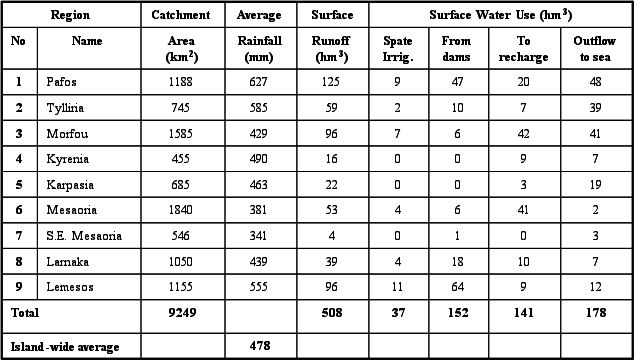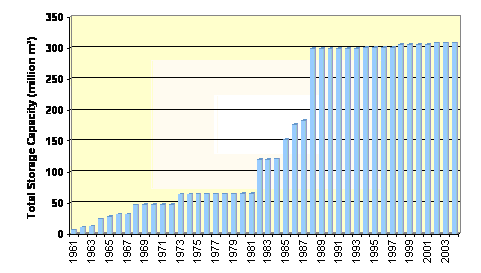Since 1960, attention was turned to the systematic study and construction of water development works, both for storage and recharge purposes. After a comprehensive survey of the island’s water resources, a long-term plan for the construction of major development projects was followed, involving the construction of a large number of dams. The current total storage capacity of surface reservoirs has reached 307.5 hm³ of water from a mere 6 hm³ in 1960, and will reach 325.5 hm³ with the completion of the Kannaviou dam. This is a truly impressive achievement when compared to other countries of the same size and level of development as Cyprus. The yield of these reservoirs is about 130-150 hm³/yr, however, this value is now seldom reached due to the decline in rainfall and hence in runoff.
Surface runoff for each Hydrologic Region

At present, in Cyprus there are 106 dams and ponds: 35 large dams with a capacity of 286.1 hm³ of water, of which 4 are groundwater recharge-flood protection dams, 42 small dams with a capacity of 16.1 hm³ of which 32 are recharge-flood protection dams, and 26 ponds with a capacity of 2.5 hm³. Eighty-one percent (81%) of the dams, i.e. 85 in number, are earth fill or rock fill.
The remaining 19%, i.e. 20 in number, are concrete dams. Generally, these reservoirs are able to hold two to three times the average annual flow of a stream.

Dam construction (1961 – 2004)